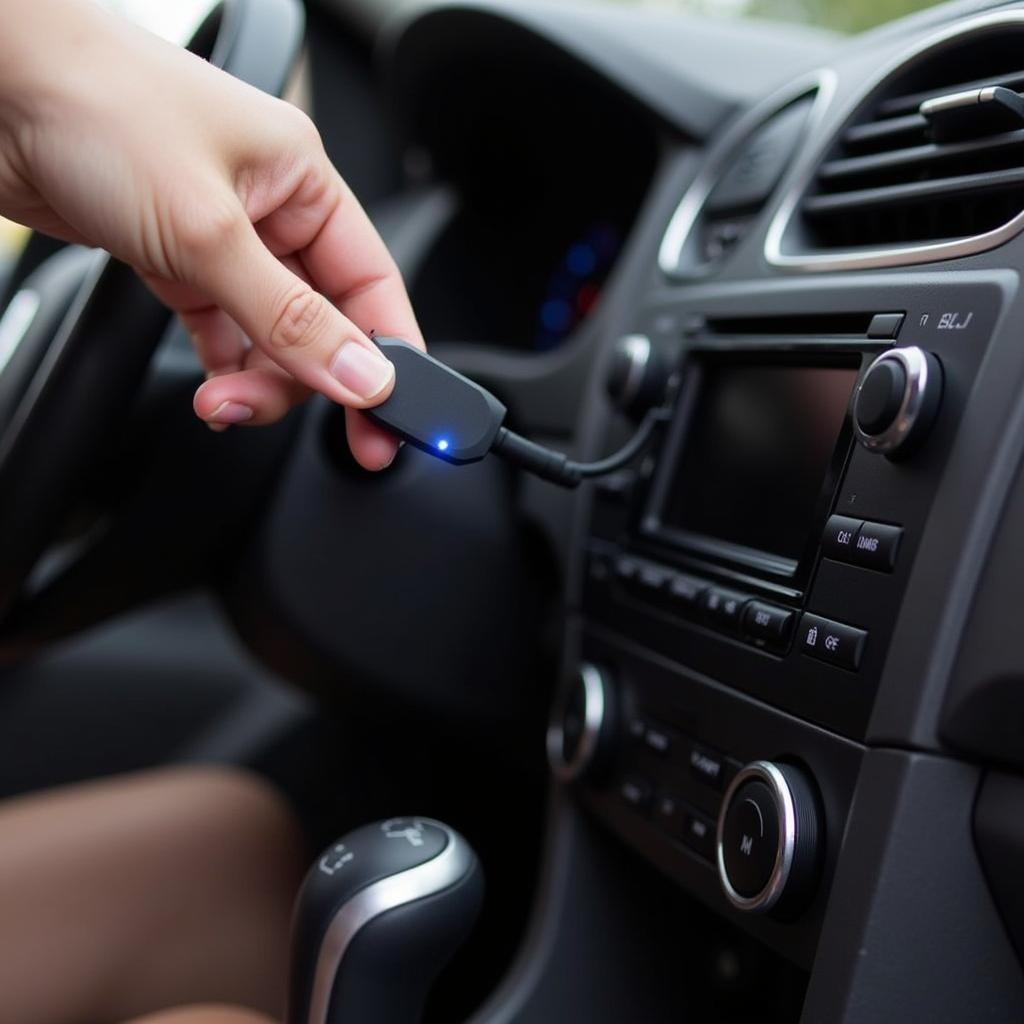Testing for a parasitic draw on your car battery is crucial for maintaining its health and preventing unexpected starting issues. A parasitic draw, also known as a “key-off” drain, occurs when electrical components continue to consume power even after the vehicle is turned off and the key is removed. This can slowly drain your battery, leaving you stranded with a dead battery. This guide will walk you through how to test for a parasitic draw and identify the culprit.
Understanding Parasitic Battery Drain
A healthy car battery will naturally discharge over time, but a significant drain while the car is off indicates a problem. Several components can contribute to a parasitic draw, such as faulty interior lights, a malfunctioning alternator, a glove box light staying on, or even a problem with the car’s computer system. Identifying the specific source requires systematic testing.
Tools You’ll Need for Testing
Before you begin testing, gather the necessary tools. You’ll need a multimeter capable of measuring DC current (amps), preferably with a milliamp range for greater accuracy. Safety glasses are also recommended to protect your eyes. Optionally, a wiring diagram for your specific car model can be extremely helpful in tracing circuits.
 Essential Tools for Parasitic Draw Test
Essential Tools for Parasitic Draw Test
How to Test for a Parasitic Draw: A Step-by-Step Guide
-
Prepare Your Vehicle: Park your car on a level surface, turn off the ignition, and remove the key. Close all doors, turn off all lights, and ensure the radio and any other accessories are off.
-
Set Up Your Multimeter: Connect the red lead of your multimeter to the positive (+) terminal of the battery and the black lead to the negative (-) terminal. Initially, you might see a high current reading as some systems shut down. Wait several minutes for this reading to stabilize.
-
Disconnect the Negative Battery Cable: Carefully disconnect the negative (-) battery cable. Important: Be aware of any stored radio codes or other settings that may be lost when disconnecting the battery.
-
Connect the Multimeter in Series: Connect the red lead of your multimeter to the negative battery terminal and the black lead to the negative battery cable. This places the multimeter in series, allowing it to measure the current flowing out of the battery.
-
Observe the Current Reading: A reading of 50 milliamps (0.05 amps) or less is generally considered acceptable. A higher reading indicates a parasitic draw.
-
Isolate the Source: Begin removing fuses one at a time, observing the multimeter reading after each removal. If the current draw drops significantly after removing a specific fuse, you have identified the circuit with the problem. Consult your car’s wiring diagram to identify the components within that circuit.
-
Further Investigation: Once you’ve narrowed down the circuit, you can further investigate the specific components by disconnecting them one by one and observing the multimeter readings. This will help pinpoint the exact culprit, whether it’s a faulty relay, a stuck switch, or a malfunctioning component.
Common Causes of Parasitic Draw
Some of the most frequent culprits of a parasitic draw include interior lights, glove box lights, trunk lights, faulty door switches, aftermarket stereo installations, and alarm systems. Less commonly, a faulty alternator diode or a problem within the car’s ECU can also cause a significant drain.
Conclusion
Testing parasitic draw on car battery is a crucial skill for any car owner. By following these steps, you can identify and resolve the issue, preventing future dead battery situations and extending the life of your battery. Remember to consult your car’s specific wiring diagram for accurate circuit identification. Regularly testing for parasitic draw can help keep your car running smoothly and prevent unexpected breakdowns.
FAQ
-
What is a normal parasitic draw on a car battery? A draw of 50 milliamps (0.05 amps) or less is generally considered acceptable.
-
Can a parasitic draw damage my car battery? Yes, a continuous drain can significantly shorten the lifespan of your battery.
-
Do I need any special tools to test for a parasitic draw? You’ll need a multimeter capable of measuring DC current (amps).
-
What if I can’t find the source of the draw? It’s recommended to consult a qualified automotive electrician for further diagnosis.
-
How often should I test for parasitic draw? Periodically checking, especially if you notice your battery draining faster than usual, is a good preventative measure.
-
Can a bad alternator cause a parasitic draw? Yes, a faulty alternator diode can contribute to a parasitic draw.
-
What should I do if my car’s computer is causing the drain? Consult a professional mechanic experienced in car computer diagnostics.



